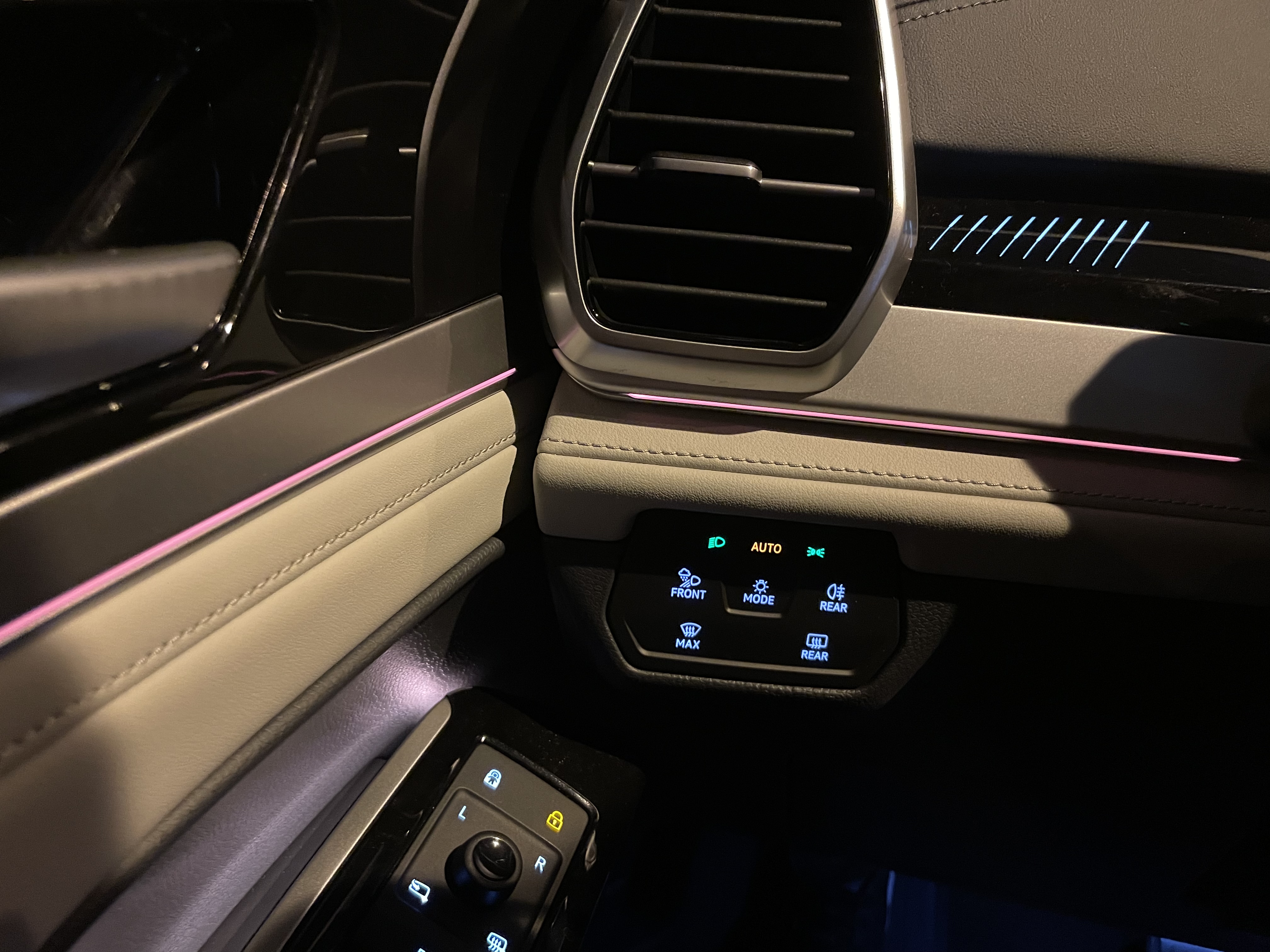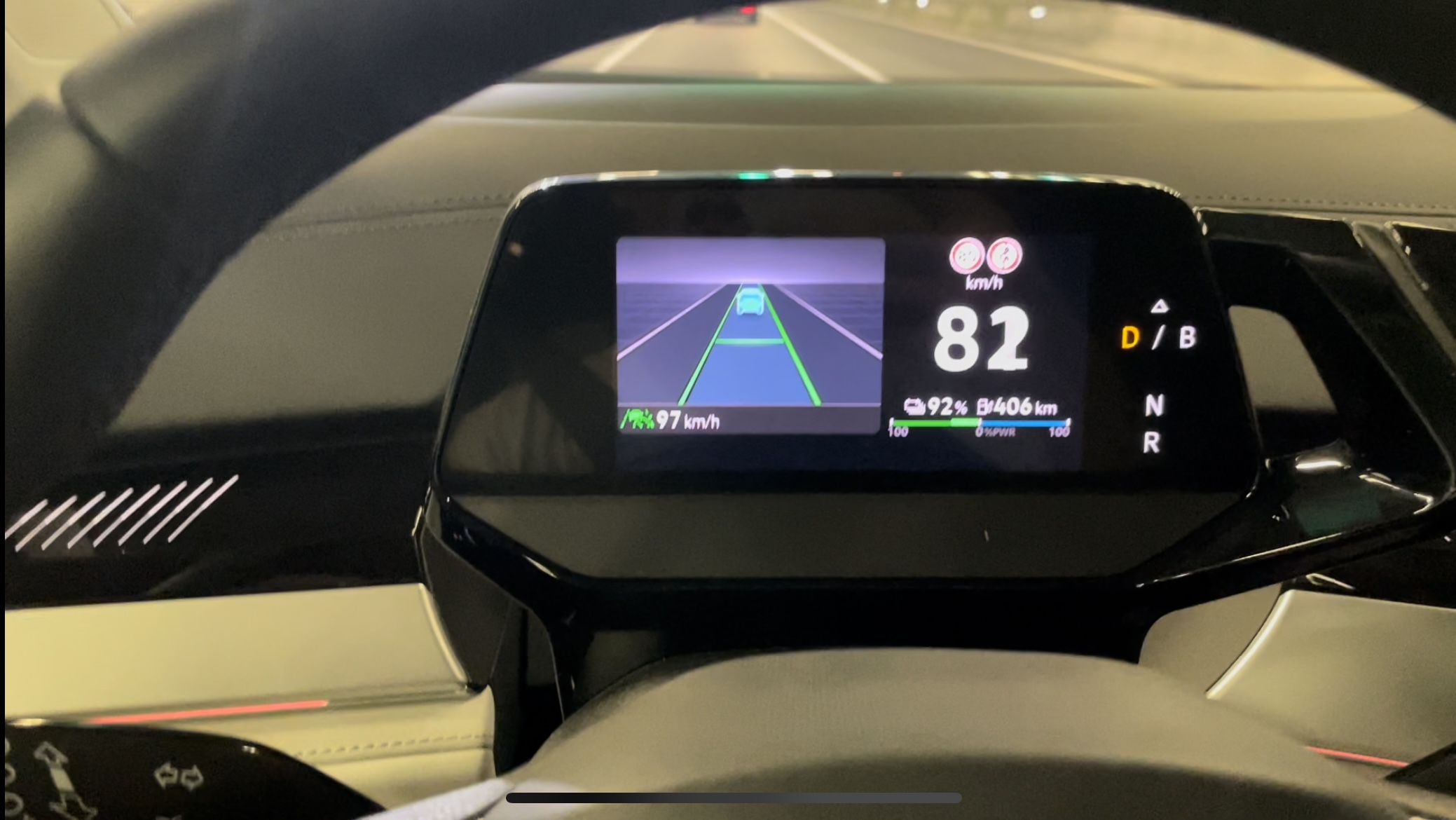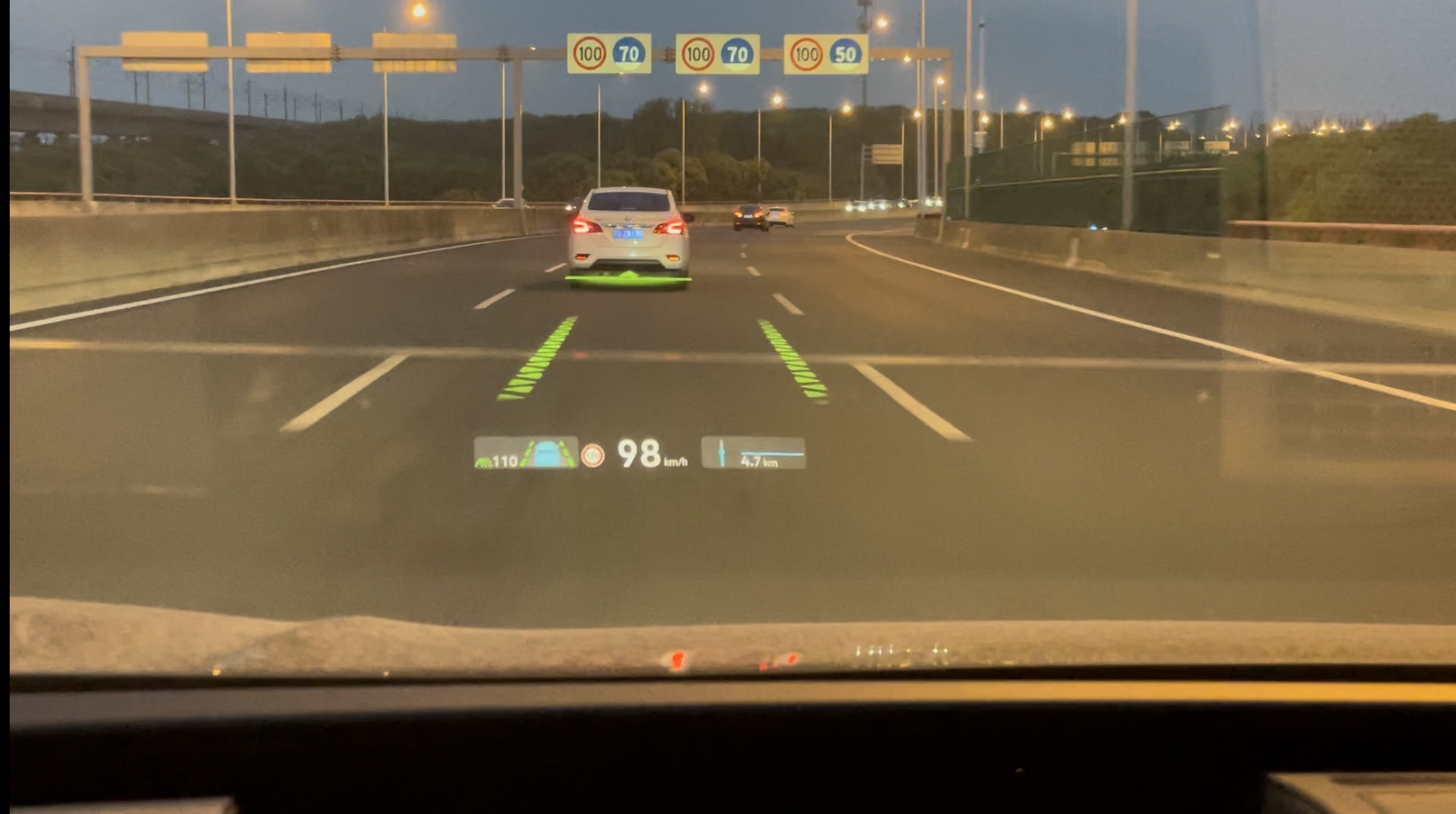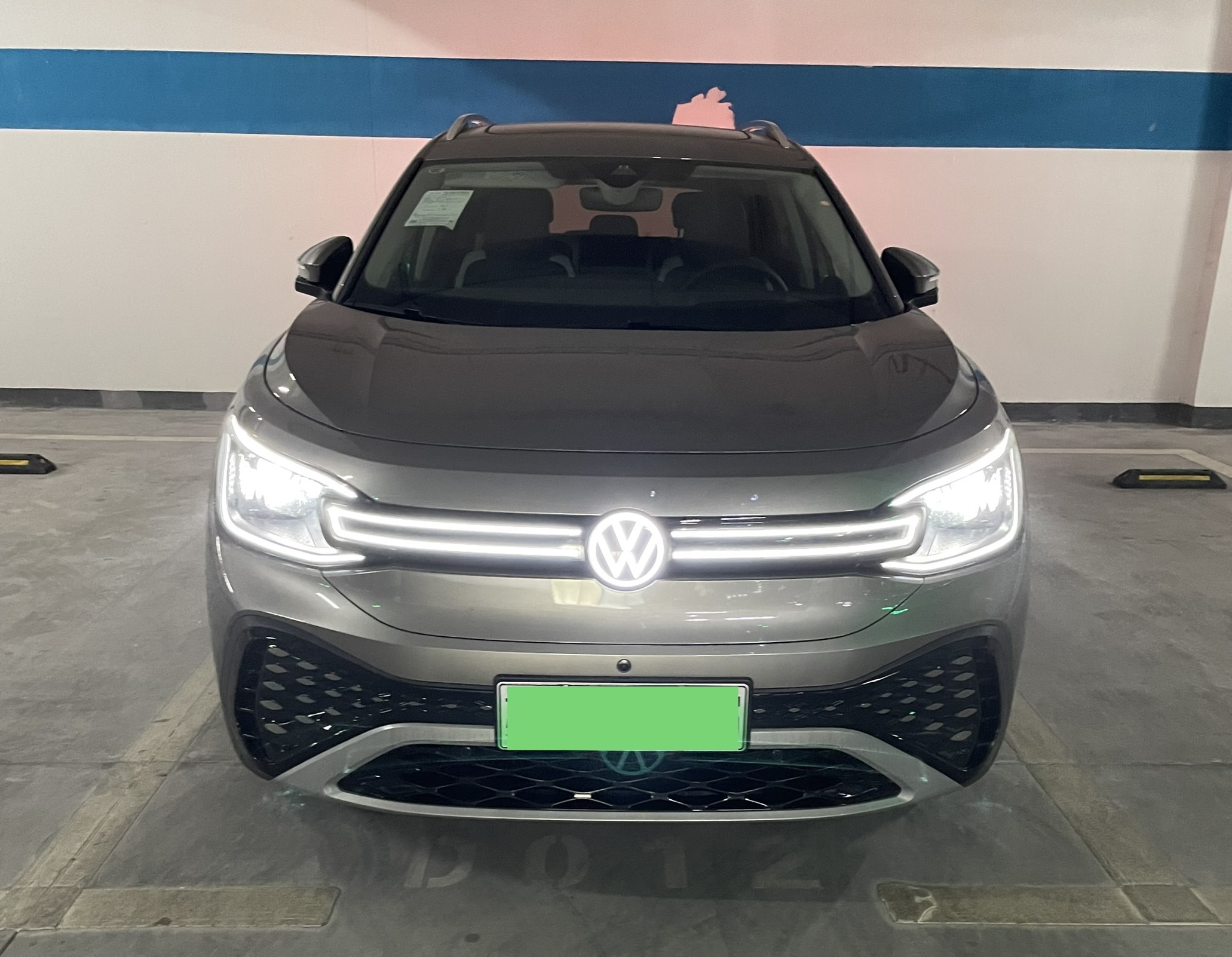ID.6
When ID.6 was launched, I didn’t have high expectations for this car. It has the same 150kW rear-mounted motor and 83.4kWh battery as ID.4, but the car is over 100kg heavier and larger in size. However, after driving it, I found that the driving experience exceeded my expectations. It’s a flexible chubby boy! 😄
1. Riding Experience
With my daily sitting position in the front row, the rear space is still spacious, with ample legroom and a good match between the seats. There is no problem of insufficient foot space causing poor seat support. The trunk space is large, which is what an SUV of this size should have. Even when the third-row seats are opened, there is still more luggage space than a normal two-box car.
However, there are some issues. There are too many touch panels in the interior, such as the lights, door locks, and hazard lights, which are all touchable. It can be said to be an anti-human design. When adjusting the lights, you have to look down to see where you want to operate, and you can only touch the desired position by looking at it. Otherwise, you may accidentally touch other buttons. After operating it, you still need to look down to see if the lights are turned on or off. Another point of criticism is that only two window control buttons are retained, and to operate the rear seats, you need to activate the “REAR” touch button, which has an orange backlight when activated, which means that it is completely invisible in bright light.

2. Chassis Experience
The overall performance is good, with good comfort and overall feeling. One vibration is enough to finish without extra tremor, and there is a strong sense of luxury. As for sportiness, I did not push it too hard due to the conditions, but the subjective feeling is average, but it is understandable considering its positioning. The sound insulation performance is surprisingly good. The overall performance is excellent. The noise from the motor is well suppressed, and there is no obvious motor noise during rapid acceleration. There is some road noise when driving at 80-100 km/h, and wind noise is slightly noticeable at around 120 km/h, but overall, the car is highly commendable. The steering feeling is moderate. Even in comfort mode, the basic strength is still heavy, but fortunately, the steering angle of the tires is very large, which makes turning and leaving the garage more convenient. It is very easy to make a U-turn, and interestingly, when making a U-turn, you cannot fully turn the steering wheel in place. You can only do so after the car starts moving. The overall feeling is also different. It should be due to the large steering angle design, which really lives up to its name as a flexible chubby boy. 😂
3. Driver AssistanceLet’s talk about the SR interface of the advanced driving assistance system (ADAS) first. To sum up, it’s not exactly minimalist, you could say it’s a bit crude. However, it’s fortunate that there’s an augmented reality (AR) heads-up display (HUD) to salvage the situation. To elaborate on Volkswagen’s design philosophy for this feature, when you turn on the Lane Changing Control (LCC) and Adaptive Cruise Control (ACC), the HUD displays an animated lane extension, and if there’s a target car ahead, it’s automatically recognized and a green line segment is used to mark it. The line segment follows the target car in real time; it’s very easy to understand. The SR area on the instrument panel can be adjusted to one third or half the size, but there’s no difference in display effect. See the attached figures for details. The instrument panel can indicate the situation of the vehicle ahead and the lane markings. In short, it’s a very simple form of information extraction, and it can’t compete with the dynamic ADAS information offered by new players like WmAuto and NIO.


Now let’s talk about the LCC’s performance. I think it’s really good, at least for an L2-level system. The ability to keep the car in its lane is very strong, and on normal commuter roads with gentle turns, it’s easy to pass even moderate turns. Throughout, there’s not much need for driver intervention. Set the following distance to the second gear (out of five gears), and the distance to the preceding vehicle is estimated to be 10 meters. The acceleration and deceleration are very linear, which is very important. Frequent jerks would make you want to turn off this feature immediately. In terms of deceleration, the ACC defaults to regenerative braking first, and then uses mechanical braking if necessary, optimizing energy consumption.
4. Summary
The overall mechanical quality of this car is really strong, and there is plenty of space for an average family of four. The ADAS is also a very good feature, and I recommend choosing the IQ Light and IQ Drive options. Through this test drive, I have become more determined about the choice of our family’s next car 😁. As for what that is, I welcome discussion in the comments section 😉👻.
This article is a translation by ChatGPT of a Chinese report from 42HOW. If you have any questions about it, please email bd@42how.com.
